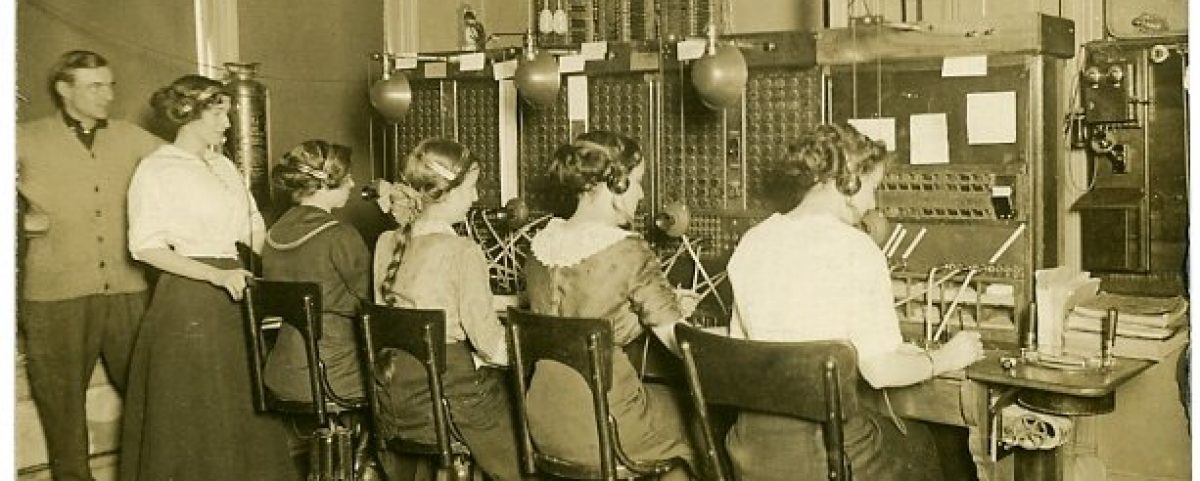In the late 19th century, employment opportunities for women were largely confined to roles such as domestic work, teaching, and a few other low-paying, socially acceptable occupations. Yet, trailblazers emerged, carving out spaces for themselves in traditionally male-dominated fields. Among these were two remarkable, pioneering women who worked as tower operators for the railroad.
Until the late 20th century, railroads relied on signal towers along the right-of-way to perform essential operations–controlling train movement on blocks of track and switching at junctions. These towers had to be staffed 24/7 by workers who could handle the responsibility of ensuring safety and efficiency on the railroad. It was a demanding job that required exceptional focus, resilience, and technical expertise.
A vivid description of this work came from a reporter at the Cecil Whig, who characterized the night operators’ experience:1
The night operator in the railroad signal tower has a lonely occupation and the long hours of the night drag themselves out to a weary length. It is a position of grave responsibility and the occupation of that signal box, away off in a desolate locality, must be reliant and steady. The loud whistle of the storm and the shrill shriek of the engine dashing by must be totally disregarded, and the attention of the midnight worker kept close upon the tick-tick of the instruments. The peripatetic tramp must be sped along as the parting guest and his raps and threats when denied admission out of the storm, must be answered with a firm assertion of one’s determination and the nerve must be steady and strong.

This position tested the nerves of even the most seasoned railroad men, and “very few women were qualified for the duties,” the visiting reporter observed. One of those ladies occupying such positions of trust and always standing at her post through storm and calm was Bertie Morrison, the night operator at the Octoraro Junction.
There, where the Octoraro Creek meets the Susquehanna River, was a critical intersection where the tracks of the Philadelphia and Baltimore Central Railroad met the Port Deposit and Columbia Road. This remote outpost stood isolated, about a quarter of a mile from the village of Rowlandsville.

Working in this remote, one-person tower in 1896, Bertie Morrison began her shift every evening at 6 p.m., overseeing the junction through the long, silent hours of the night. With nothing but the occasional rumble of a passing locomotive and the ticking of the telegraph machine to break the silence, Miss Morrison operated levers for the switches, managed traffic in the block, and typed out Morse Code messages on the telegraph.
At 7 a.m., another lady showed up to relieve her. This operator was Ida Bradley. She had learned telegraphy from her father, Lafayette, the station agent at Rowlandsville.
These pioneering women paved the way for future generations.
Biographical Notes
Ida Virginia Bradley – Ida worked as a tower operator at Octoraro Junction for 15 years. She learned telegraphy under her father, Lafayette Bradley, the station agent in Rowlandsville. At the time of the 1880 census, she was 26 years old, living with her parents. Ida spent her entire life in the Liberty Grove and passed away at 81. She was laid to rest at West Nottingham Cemetery.2,3
Bertie Morrison – The 1880 census records show Bertha Morrison, aged 11, living in northwestern Cecil County. She later married George S. Loux, who was listed as a telegraph operator in New Jersey’s 1915 census.4 Bertie passed away on June 25, 1946, at the age of 77 and is buried at West Nottingham Cemetery.5
Notes
- “A Woman With Pluck,” The Cecil Whig, July 4, 1896, 1, ↩︎
- “Ida Virginia Bradley,” obituary, Midland Journal, June 30, 1933. ↩︎
- United States Census, 1880, Ida Bradley entry,” FamilySearch (2025). ↩︎
- New Jersey State Census, 1915, George S. Loux, FamilySearch ↩︎
- “Bertha Morrison Lous,” Obituary, Midland Journal, July 19, 1946. ↩︎
Additional Articles of Interest
From the Blog “The Parnassus Pen, “My Love Letter to Telegraph Operations and Their Heartbreaking Tragedies.





